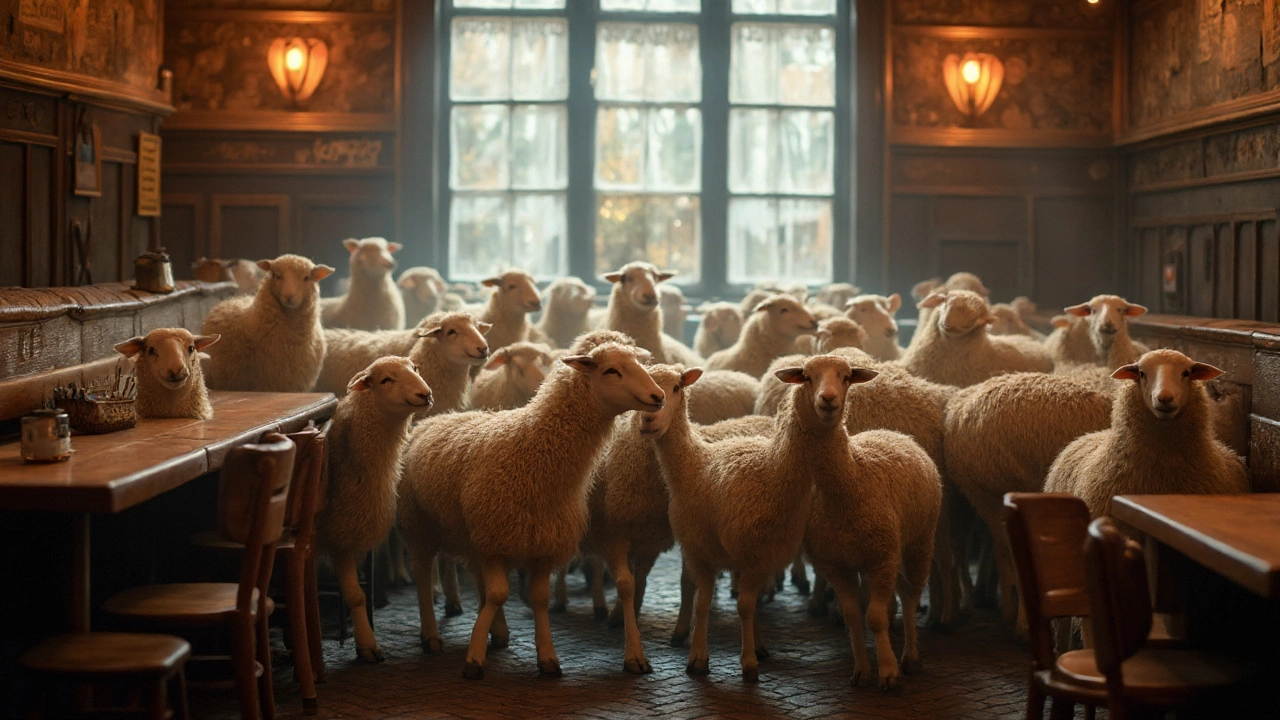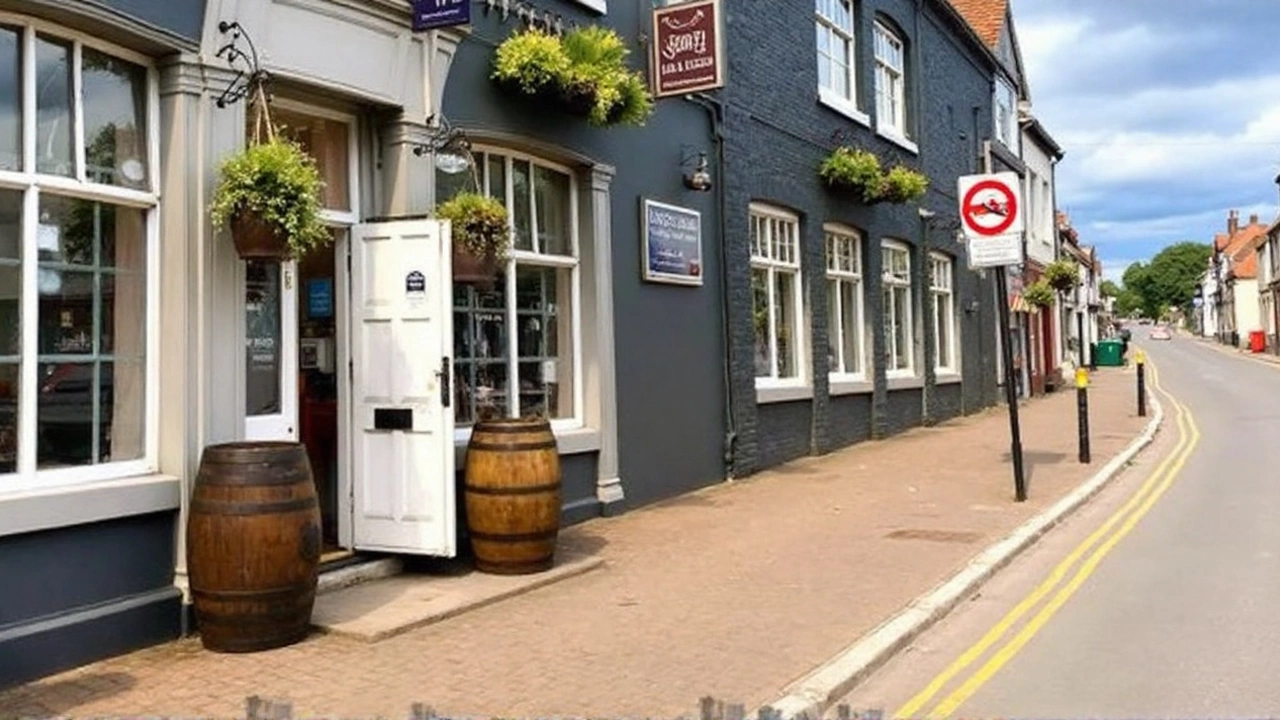The pressure cooker behind the bar
One in five pubs is now technically insolvent. That’s not a scare line—it’s a reality check for an industry that’s been squeezed for years and is now running out of slack. As households tighten spending—35% say they’ll cut back on pub visits in 2025—operators are facing a brutal balancing act: keep prices palatable, pay rising bills, and still have something left at the end of the week.
So why are beloved locals rolling out moves that feel drastic—going cash-only, trimming opening hours, or adding new fees? Because the sums often don’t add up. Net margins in the trade are thin at the best of times—single digits for many wet-led sites—and a handful of cost lines have ballooned at once.
Here’s what’s pinching most:
- Energy: Bills that surged in the past two years are still high by pre-2021 standards. Many pubs report paying at least double what they did before the energy crisis.
- Wages and staffing: Wage uplifts and staffing shortages have pushed labor costs higher. Training and retention add more pressure.
- Business rates: Revaluations and relief changes hit bricks-and-mortar venues hard, especially in busy town centers.
- VAT and duty: Operators argue the current structure punishes eating and drinking out versus supermarket alcohol.
- Card processing fees: For each pint on a card, there’s a percentage fee plus a per-transaction charge. On a £5.50 drink, that can eat most of the profit.
- Debt overhang: Many pubs took on loans during the pandemic. Servicing that debt now is tougher as costs rise and footfall softens.
That’s the backdrop for a string of unpopular but necessary moves. Across the UK—and in Wales—operators are experimenting with changes they hope will keep the doors open through the slow months and beyond.

The survival playbook (and what it means for you)
Pubs that make it through this period won’t do it by accident. They’re rebuilding their business models in real time. If your local has announced a big policy shift, it’s likely driven by one of these strategies.
Payment policies are changing. Some venues are going cash-only on certain days, or offering a small discount for cash to offset card costs. Others introduce a flat service fee per table to cover payment and admin overheads. The logic is simple: a 1%–2.5% card fee plus a per-transaction charge can wipe out the profit on low-ticket items like a single pint or a soft drink.
Hours are getting tighter. Monday and Tuesday closures, shorter afternoons, and later openings on quiet weekdays are now common. That cuts wage and energy costs during dead periods and concentrates trade into profitable windows. Expect more seasonal schedules too—longer hours when tourists show up, leaner timetables in winter.
Menus are slimming down. Smaller menus mean less waste, simpler prep, lower energy use, and faster service. You’ll notice fewer fragile ingredients, more batch-cooked dishes, and tighter specials boards. Operators say this can lift gross margins by cutting spoilage and supplier deliveries.
Prices are creeping—but in smarter ways. Instead of a blunt across-the-board rise, many pubs use dynamic pricing: holding the line on entry-level pints while nudging up premium pours, cocktails, or large-format serves. The aim is to keep regulars in while letting treat occasions subsidize overheads.
Events and memberships are back. From quiz nights and tap takeovers to supper clubs and live acoustic sets, events create reasons to visit midweek. Loyalty schemes—monthly pints, discounts on food, birthday perks—pull spend forward and build habit. Some pubs offer pre-paid “founder” cards or community bonds to bridge a cashflow gap.
Side hustles help. Coffee and pastries in the morning, workspace tables with sockets and Wi‑Fi, bottle shops, function hire, and even breakfast clubs for parents add revenue during the day. A few sites are subletting kitchens to street-food operators, swapping fixed wage costs for a revenue share.
Tech is becoming a margin tool. QR codes and order-at-table cut staffing spikes; better stock systems trim waste; demand forecasting helps schedule fewer people on slow shifts. None of this is glamorous, but it keeps the lights on.
Not every option is popular. Cash-only days are a headache for some customers. Flat fees spark debate. Reduced hours can disappoint regulars who rely on a pub’s rhythm. But operators will tell you the choice is often stark: tweak the model or risk closure.
Wales is feeling all of this. Coastal towns that lean on seasonal trade are squeezing costs hard in winter. City-center sites are battling higher rents and rates. Community-run pubs—there are now well over a hundred across the UK—remain a bright spot, using member volunteers and local funding to keep cherished venues alive.
What can you expect as a customer?
- Payment: More minimum spends at the bar, cash discounts, or flat table fees. Bring a card and some cash if you can.
- Hours: Check opening times before heading out—especially early week and late afternoon.
- Menus: Shorter, more focused lists with rotating specials. Good for quality and speed, less room for niche dishes.
- Prices: Entry-level pints might hold steady, while premium options carry more of the rise.
- Events: More scheduled nights to give you a reason to visit midweek. Expect to see them promoted in-house.
What are pubs asking for? Three things come up again and again: a lower VAT rate for hospitality to level the field with supermarkets, a fairer business rates system for venues with high fixed costs, and action on card processing fees that scale with small-ticket transactions. Energy contracts with clearer terms would help too; plenty of operators feel burned by volatile rates and opaque clauses.
There’s also a cultural side to this story. Pubs are more than retail boxes—they’re community infrastructure. When a local shuts, you don’t just lose a bar stool. You lose a social hub, a job base for young people, a meeting space for teams and clubs, and a small but real safety net for people who live alone. That’s why drastic measures—cash-only days, shorter hours, membership schemes—are showing up. They’re not optics. They’re survival tactics.
For anyone wondering why some venues look busier while others struggle, two factors stand out. Location and mix. Neighborhood pubs with steady regulars and lower rents can stay nimble. City-center sites that rely on office workers and late-night trade are fighting a tougher battle. Food-led gastropubs are hedged: food margins can help, but kitchen costs are heavy. Wet-led community pubs can flex, but only if footfall holds and payment costs are controlled.
Where does that leave the year ahead? Operators are planning month to month. If consumer cutbacks stick and input costs don’t ease, more venues will press the tough buttons: shorter weeks, leaner menus, targeted price rises, and new payment rules. And yes, some will close. But the ones that adapt fastest—clear opening patterns, disciplined stock, smarter events, and transparent pricing—have a fighting chance.
There’s one more uncomfortable truth. The era of the £3.50 pint in busy towns is gone. Between wages, energy, rent, business rates, and supplier costs, the floor price of going out has shifted. You’ll still find value—especially at locals that focus on session beers and simple food—but the average ticket is higher now. That doesn’t mean pubs stop being pubs. It means they have to be clearer about what they offer and why it’s worth it.
For all the gloom, the demand for a good local hasn’t vanished. People still want a place where everyone’s welcome, where the staff know your name, where the game’s on and the fire’s lit. The task is making that experience pay its way. That’s the calculation behind those “drastic” announcements. It’s not just one Welsh pub making a stand—it’s a sector resetting its rules to stay alive. And whether you’re a landlord or a regular, that’s a story worth watching for UK pubs in 2025.
